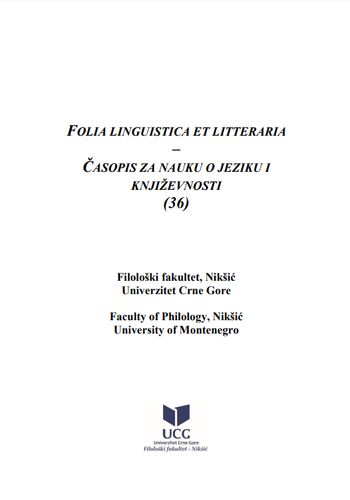Temporal Coordinates and the Deictic Centre in Sula by Toni Morrison
Temporal Coordinates and the Deictic Centre in Sula by Toni Morrison
Author(s): Linas Selmistraitis, Violeta JanulevičienėSubject(s): Syntax
Published by: Filološki fakultet, Nikšić
Keywords: chronology of the non-linear narration; temporal coordinates; deixis
Summary/Abstract: The present study deals with the role of lexical and grammatical text coherence devices in the text-constructing process and in maintaining chronological organization of the text. These devices safeguard against the disruption of the continuum in the elliptical fragmentary narrative of a Nobel Prize-winning author Toni Morrison’s short novel “Sula” where the narration weaves forward and backward, departing from the linear chronological sequence of events. “Sula” (1973) is one of the first black feminist novels in the United States, due to the current social movements sparkling a renewed interest in the story. The author herself described it as a “cracked mirror”, the pieces of which should be assembled by the reader. Methodology of the research is based on qualitative approach, the main methods being descriptive, analytical and structural-narratological. The analysis of the whole text corpus of the novel is followed by the description of the obtained data, highlighting predominant temporal devices employed in retrospection, prospection and the deixis of the narration, the continuum of narration and the overall structuring of the plot. The paper describes in detail recurrent integrative devices related to the chronological organization of the text - deictic center, specific verb tense usage, time adverbials and the overall semantics of the situation. The study shall contribute to the development of specific aspects of chronological organization of the text in the general theory of text linguistics and could be a feasible aid in teaching practical literary analysis and creative writing by providing inventory of the temporal coordinates and by developing learners’ skills for the analysis and reconstruction of the fragmented text continuum.
Journal: Folia Linguistica et Litteraria
- Issue Year: 2021
- Issue No: 36
- Page Range: 209-225
- Page Count: 17
- Language: English

